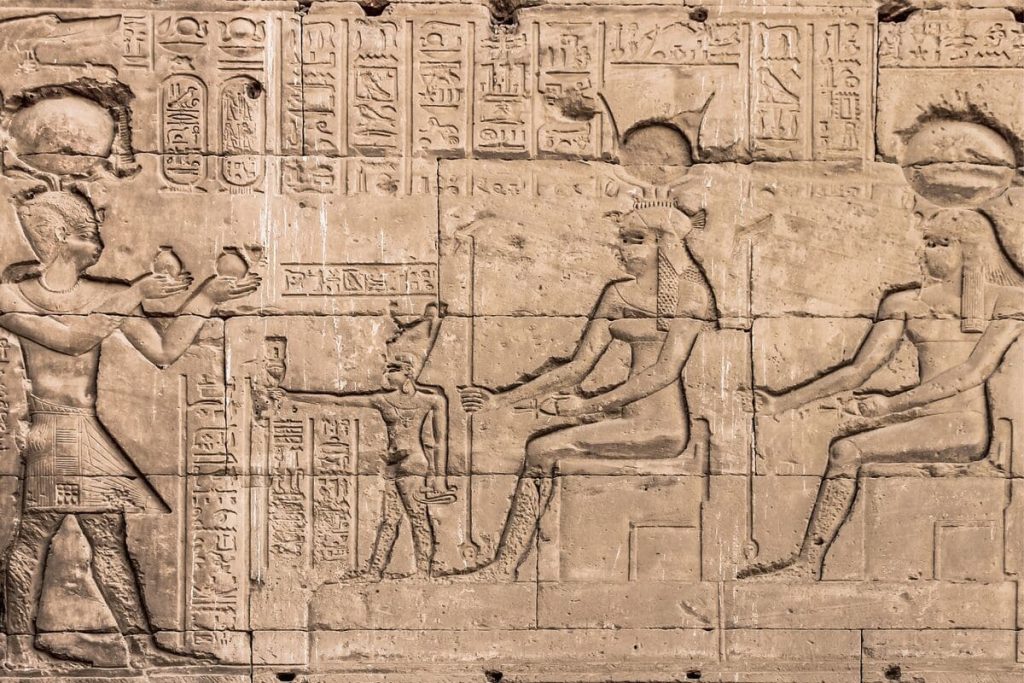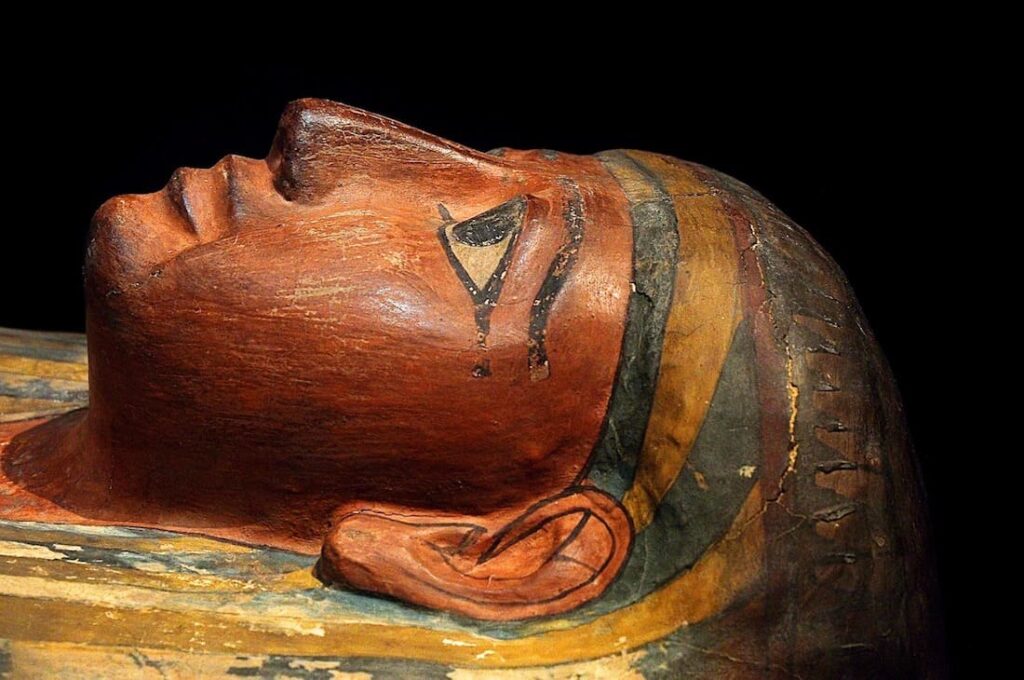イントロダクション
エジプトのミイラ
数世紀にわたり、エジプトのミイラが世界中の人々を魅了し続けています。これらの古代の遺物は謎に包まれ、豊かな歴史を内包しつつも、重要な疑問を投げかけています――エジプトのミイラはエジプトに戻されるべきでしょうか?
本記事では、この議論の核心に迫り、これらの時を超えた宝物を巡る文化的、倫理的、法的な側面について掘り下げます。
エジプトのミイラに関する歴史的背景
エジプトのミイラは単なる遺物ではなく、古代エジプトの宗教的・文化的実践を証明するものです。死後の世界への架け橋とされていたミイラ化の過程は、深い精神的信念を反映した緻密な儀式でした。しかし、これらのミイラが故国から海外の博物館に至る旅は、しばしば植民地的搾取や考古学的な興味と絡み合っていました。
エジプトのミイラの現状:世界各地での展示状況
エジプトのミイラの現状
世界で最も有名な博物館の神聖な空間において、古代エジプトのミイラたちは、すでに消え去った文明の静かな大使として存在しています。ロンドンの大英博物館やパリのルーブル美術館といった施設に展示されたその姿は、単なる展示を超え、エジプトの文化遺産がもたらす広範な影響力の証となっています。それぞれが時を刻んだ物語を秘めたこれらのミイラは、多くの人々に古代エジプトの神秘的な世界を垣間見せる特別な窓口を提供しているのです。
大英博物館:発見の物語
大英博物館:発見の物語
最も興味深い物語の一つが、大英博物館に収蔵されているテーベ出身のクレオパトラのミイラです。著名な女王とは別人で、はるか後の時代に生きたこのクレオパトラの豪華に装飾された棺は、当時の葬儀慣行や信仰に関する貴重な洞察を提供します。19世紀初頭に発見された彼女のミイラは、訪問者が2000年以上前に生きた人と直接対面する機会を与えてくれる、過去への具体的な繋がりをもたらしているのです。

ルーブル美術館:千年を超える繋がり
ルーブル美術館:千年を超える繋がり
エジプトの遺産を守るもう一つの拠点であるルーブル美術館には、エジプト最強のファラオの一人とされるラムセス2世のミイラが収蔵されています。このミイラがパリに運ばれた目的は展示ではなく、保存でした。1970年代、科学者たちが彼の遺体の劣化を食い止めるための作業を行ったのです。このように、古代史と現代科学が交差する事例は、エジプトのミイラに対する関心が今もなお続いていることを強く示しています。
永遠の谷:王家の谷と神殿の1日ツアー
エジプトのミイラの広がり
エジプトのミイラが世界各地に分散したことは、二重の目的を果たしていると言えます。一方では、古代エジプト文化への知識と関心を広く普及させる上で重要な役割を果たしてきました。ヨーロッパの学校に通う子どもたち、アメリカの歴史愛好家、そしてアジアの学者たちが、それぞれの場所からこれらの遺物に感嘆することができます。もう一方では、この広範な分布が文化遺産や遺物所有の倫理についての重要な議論を呼び起こしてきました。
エジプトのミイラが存在する場所には必ず語られるべき物語があり、学ぶべき教訓があります。これらの古代の使者は声を持たずとも、私たちの共通の歴史、そしてエジプトの荘厳な過去が持つ永遠の魅力を雄弁に語っています。

返還を巡る議論
返還を支持する議論
- 文化遺産: 支持者は、ミイラがエジプトの文化的アイデンティティにとって不可欠なものであり、故郷に戻されるべきだと主張しています。
- 倫理的配慮: ミイラの持ち出しはしばしば植民地主義の名残と見なされ、文化的な敬意や所有権に関する倫理的な問題を提起しています。
返還に反対する議論
保存: 一部の専門家は、特定の博物館がミイラの長期保存に不可欠な優れた保存設備を提供していると主張しています。
世界的なアクセス: 国際的な博物館にミイラを展示することで、グローバルな文化交流や教育が促進されるとされています。
法的および倫理的考慮事項
- 法的側面: ユネスコ条約など、文化財の返還を規定する国際法が議論をさらに複雑にしています。
- 倫理的課題: 古代遺物の所有権や扱いを巡る倫理的な問題が博物館や国々を悩ませています。
エジプトへの影響
文化的影響
ミイラの返還は、エジプトの豊かな遺産との深い結びつきを育むきっかけとなるかもしれません。
経済的影響
返還は観光を促進し、経済的な利益をもたらす可能性があります。
教育的影響
エジプト国内にミイラがあることで、研究と学習の機会が増え、学術的理解を深めることが期待されます。
ケーススタディと先例
エジプトのミイラ返還を巡る議論は、孤立した問題ではありません。それは、文化財返還をめぐる広範な対話の一環であり、近年、いくつかの注目度の高い事例が見られました。パルテノンの大理石やアフリカの遺物の返還など、これらのケースは、文化財返還の複雑さとその可能な結果について貴重な洞察を提供します。
パルテノン・マーブルズ:返還努力の基準点
パルテノン・マーブルズ:返還努力の基準点
パルテノン・マーブルズ(エルギン・マーブルズとも呼ばれる)は、数十年にわたり国際的な議論の的となってきました。元々はアテネのパルテノン神殿の一部であったこれらの彫刻は、19世紀初頭にエルギン卿によってイギリスに持ち込まれました。ギリシャは長い間、文化的および倫理的な理由を挙げて、その返還を主張してきました。
文化遺産を専門とする歴史家のヘレナ・パパドプロス博士は、インタビューの中で次のように述べています。「パルテノン・マーブルズの事例は重要です。それは、返還に対する感情的および文化的な主張だけでなく、そのようなケースにおける法的および倫理的な複雑さをも浮き彫りにしています。ギリシャとイギリスの間で続いている議論は、こうした紛争を解決する際に、対話と交渉がいかに重要であるかを示す前例を提供しています。」
アフリカの遺物:故郷への旅
Another significant case is the repatriation of African artifacts, many of which were taken during the colonial era. Countries like Nigeria and Benin have successfully negotiated the return of several important artifacts from European museums
. For instance, the Benin Bronzes, looted during a British punitive expedition in 1897, have become emblematic of the broader movement for the restitution of African cultural heritage.
Dr. Kwame Nkrumah, an anthropologist and expert in African history, explains, “The return of the Benin Bronzes is not just about rectifying historical wrongs. It’s about restoring dignity and providing an opportunity for Africans to access and celebrate their own cultural heritage. This movement is reshaping the conversation around cultural artifacts and their rightful place.”
エジプトのミイラにおける影響
結論
エジプトのミイラ返還を巡る議論
エジプトのミイラの返還をめぐる議論は、多面的なものです。文化的、倫理的、法的な考慮が絡み合い、多様な視点を持つことがこの議論を理解する上で欠かせません。
私たちは読者の皆さんに、文化遺産の豊かな織物をさらに探求し、この議論に参加するようお勧めします。それは博物館を訪れることであれ、関連する文献を掘り下げることであれ、文化遺産とその未来について考える良い機会となるでしょう。






